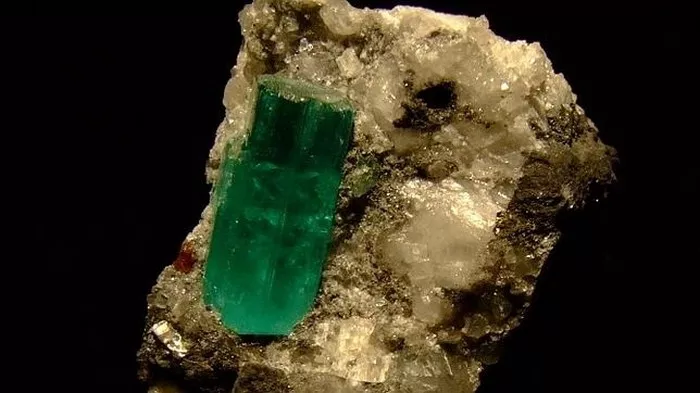Emeralds are renowned for their lush green color and captivating beauty, making them one of the most sought-after gemstones in the world. However, not all emeralds found in the market are completely natural. Many emeralds undergo various treatments to enhance their color, clarity, and overall appearance. In this article, we will explore what treated emeralds are, the different types of treatments they undergo, and how these treatments affect their value and durability.
Emeralds, like many other gemstones, may undergo treatments to improve their visual appeal or mask natural imperfections. These treatments can range from simple processes such as oiling or resin filling to more complex procedures involving heat or radiation. While treated emeralds may exhibit enhanced color and clarity, it’s essential to understand how these treatments impact their authenticity and value.
What Is a Treated Emerald?
Emerald treatments are primarily aimed at improving the gemstone’s appearance by minimizing the visibility of inclusions and enhancing its color saturation. The most common treatments for emeralds include:
Oiling: Oiling is perhaps the oldest and most widely used treatment for emeralds. It involves filling surface-reaching fractures and cavities with a colorless oil or resin to improve clarity and transparency. The oil fills the voids, reducing the appearance of inclusions and enhancing the emerald’s brilliance. While oiling is a relatively simple and reversible treatment, it may require periodic reapplication to maintain its effectiveness.
Resin Filling: Similar to oiling, resin filling involves injecting a colored resin into surface-reaching fractures to improve clarity and color uniformity. The resin fills the voids and adheres to the emerald’s surface, creating a more stable and visually appealing gemstone. However, resin-filled emeralds may be more susceptible to damage from heat, chemicals, and physical impact.
Heat Treatment: Heat treatment is commonly used to enhance the color and clarity of emeralds by subjecting them to high temperatures. This process can help dissolve or reduce the visibility of inclusions and improve the gemstone’s overall appearance. However, excessive heat can also cause damage to the emerald or alter its natural properties, leading to a decrease in value.
Radiation Treatment: Some emeralds undergo radiation treatment to enhance their color intensity. This process involves exposing the gemstone to controlled doses of radiation, which can alter the molecular structure of the emerald and intensify its green color. While radiation treatment can produce strikingly beautiful emeralds, it also poses health and safety risks and may require additional safety precautions during handling and storage.
Surface Coating: Surface coating, also known as “fracture healing,” involves applying a thin layer of colored oil or resin to the surface of the emerald to mask surface imperfections and enhance its color. While surface coating can temporarily improve the appearance of the emerald, it is considered a less desirable treatment due to its temporary nature and potential for wear and damage.
Identifying Treated Emeralds
Detecting treated emeralds can be challenging, as many treatments are designed to be subtle and difficult to detect without specialized equipment. However, there are several methods and indicators that can help identify treated emeralds:
Visible Inclusions: Treated emeralds may exhibit fewer visible inclusions or surface-reaching fractures compared to natural emeralds. However, careful examination under magnification may reveal telltale signs of treatment, such as filling materials or residues.
Color Uniformity: Treated emeralds may display more uniform color distribution and saturation than natural emeralds. Look for any inconsistencies or color zoning within the gemstone, which may indicate artificial enhancement.
Fluorescence: Some treated emeralds may exhibit unusual fluorescence under ultraviolet (UV) light, particularly those that have undergone radiation treatment. While not all fluorescent emeralds are treated, the presence of strong fluorescence can be a red flag for further investigation.
Documentation and Certification: When purchasing an emerald, always ask for documentation and certification from a reputable gemological laboratory. Certified gemologists can conduct a series of tests, including spectroscopy and microscopic analysis, to determine whether the emerald has been treated and to what extent.
Impact of Treatments on Value and Durability
The treatments undergone by emeralds can have a significant impact on their value, durability, and long-term stability. While treatments such as oiling and resin filling are generally accepted within the gemstone industry and may not significantly affect an emerald’s value, more invasive treatments such as heat or radiation can lower the gemstone’s desirability and marketability.
Additionally, treated emeralds may be more prone to damage from heat, chemicals, and physical impact, especially if the treatment is not properly disclosed or maintained. It’s essential to handle treated emeralds with care and follow any recommended cleaning and maintenance procedures to ensure their longevity and beauty.
Conclusion
Treated emeralds are a common presence in the gemstone market, offering enhanced color and clarity at a fraction of the cost of natural, untreated emeralds. While these treatments can improve the visual appeal of emeralds, they also raise questions about authenticity, value, and durability. By understanding the different types of treatments used for emeralds and their potential impact, consumers can make informed decisions when purchasing or evaluating these precious gemstones. Whether you’re a gemstone enthusiast, a jewelry collector, or a prospective buyer, knowing how to identify and assess treated emeralds is essential for navigating the complex world of gemstone procurement and appreciation.


